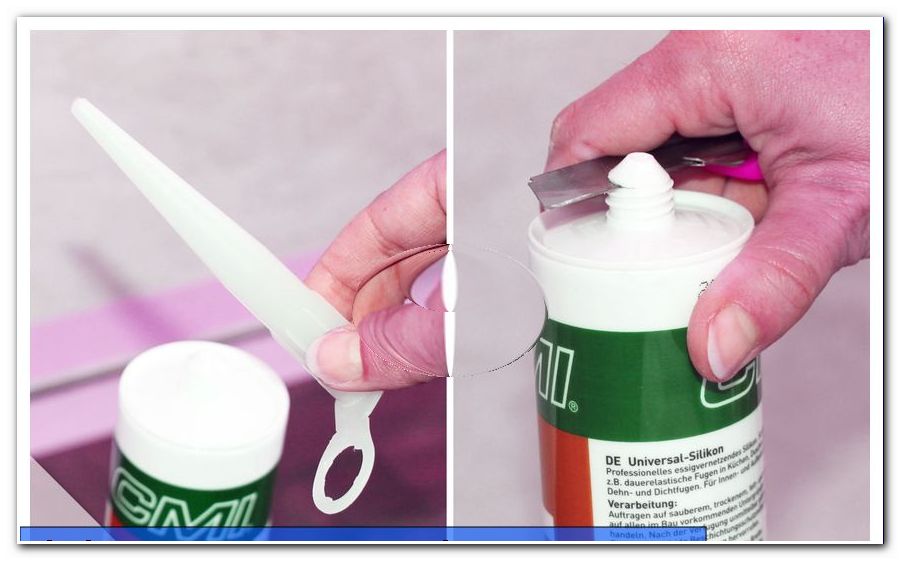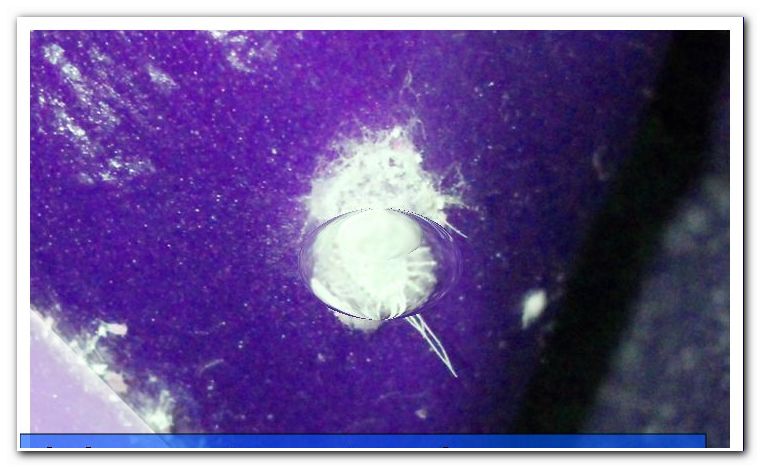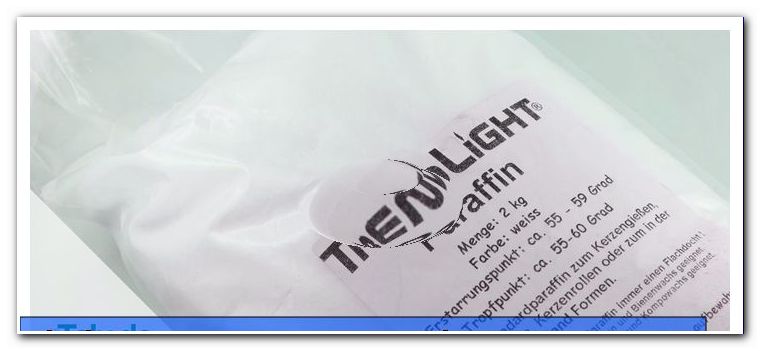Knit Crisscross - Instructions for knitted crosses

- Material and preparation
- Knit monochrome cross stitch
- Knit two-colored cross stitch
- Possible variations
Did you know how easy it is to beautify your knitwear with geometric shapes ">
You can not imagine how you should knit crosses? You will be surprised how easy it is. With right and left stitches we conjure a decorative monochrome cross pattern. In addition, we show you a simple gimmick with which crosses in two colors easily go by the hand.
Material and preparation
The easiest way to test your first criss-cross pattern is with a smooth wool. Such a can be easily entangled and the individual stitches are easily recognizable. On the banderole, the manufacturer of your yarn recommends suitable needle sizes. Four to five means a medium thickness and is optimal for trying out the patterns. The two-color criss-cross pattern is easily too tight. Take a needle size at the top of the recommendation.
In this guide we assume that you can knit stitches as well as tie and bind. How to lift stitches to create a two-tone knit we will explain to you. Before you start the actual pattern, knit a set of left-hand stitches. Repeat the steps described in each row until no stitches are left on the left needle.
You need:
- Wool in one or two colors
- Matching knitting needles

Knit monochrome cross stitch
This simple right-left pattern looks attractive from both sides. Suggest a mesh number divisible by twelve.
Tip: If your project requires a mesh size that can not be divided by twelve, you can work with any number. In this case, knit the last repeat before the end of the row in odd rows only as far as your stitches go. In straight rows, enter the pattern at the beginning later. For example, if you miss five stitches, start with the sixth stitch described. The crosses on the edges of the work thus remain incomplete.

To knit the monochrome cross pattern:
1st row: knit all stitches to the right
2nd row: knit all the stitches on the left
3rd row: 3 stitches on the right, 3 stitches on the left, 6 stitches on the right
4th row: 6 stitches on the left, 3 stitches on the right, 3 stitches on the left
5th row: like 3rd row
6th row: like 4th row
7th row: 9 stitches on the left, 3 stitches on the right

8th row: 3 stitches on the left, 9 stitches on the right
9th row: like 7th row
10th row: like 8th row
11th row: like 3rd row
12th row: like 4th row
13th row: like 3rd row
14th row: like 4th row
15th row: like 1st row
16th row: like 2nd row
17th row: like 1st row
18th row: like 2nd row
19th row: 9 stitches on the right, 3 stitches on the left

20th row: 3 stitches on the right, 9 stitches on the left
21st row: like 19th row
22nd row: like 20th row
23rd row: 3 stitches on the left, 3 stitches on the right, 6 stitches on the left
24th row: 6 stitches on the right, 3 stitches on the left, 3 stitches on the right
25th row: as 23rd row
26th row: as 24th row
27th row: like 19th row
28th row: as 20th row
29th row: like 19th row
30th row: as 20th row

31st row: like 1st row
32nd row: like 2nd row

Repeat the pattern continuously. If you want to chain off your project in front of a 32nd row, the 15th through 18th rows work best to keep the last crosses unfinished.

On the back, the crosses look just as decorative, but the structures of the left and right stitches are reversed.
Knit two-colored cross stitch
The small crosses appear in a different color than the background, although you work with only one thread in each row. In addition to right and left stitches you only need lifted stitches. How this simple but effective gimmick works is explained in the next section. Knit with a divisible by four stitch number. Choose which color you want to use for the background (color A) and which color you want for the crosses (color B). Start with color A.
Tip: In addition to the stitches for the pattern, make two edge stitches so that the stitched stitches do not touch the edges. For example, knit the extra stitches in odd rows on the right and in the straight left, each in the currently used color. You get a clean, two-tone border.

Lift off the stitches
Slide the stitch over the right needle without knocking it off. This skipped stitch thus still has the color of the previous row, creating the pattern. For a left-hand hoist put the thread in front of the work, for a right behind it. The aim is for the loose piece of yarn to lie on the backside of the finished fabric.
Tip: Especially if you skip several stitches, be careful not to over-tighten the thread when knitting the next stitch. Stretch the fabric to check that the tension is loose enough.
To knit the bicoloured cross pattern:
1st row (color A): knit all stitches to the right
2nd row (color B): Take off 2 stitches on the left, knit 1 stitch on the left, and 1 stitch on the left
3rd row (color B): knit 3 stitches on the right, 1 stitch off to the right
4th row (color A): Knit 2 sts left, 1 st from left, knit 1 st at left

5th row (color A): knit all stitches to the right
6th row (color B): Knit 1 stitch on the left, lift off 3 stitches on the left
7th row (color B): Knit 1 stitch on the right, take off 1 stitch on the right, knit 2 stitches on the right
8th row (color A): Take off 1 stitch on the left, knit 3 stitches on the left

Continue knitting the pattern with the eight rows described.

On the back you can see the tensioning threads that run past the lifted stitches.

Possible variations
1. Change the size of the monochrome crosses or the distance between them. Irregularly distributed, different sized crosses also give an interesting picture. Paint your own cross pattern on checkered paper. Each box symbolizes a mesh. Note that you turn to work after each row. In backsheets, that is, while looking at the back of the pattern, knit right stitches on the left and vice versa.
2. Knit only half of the described rows, ie 16 rows for the monochrome and four rows for the two-color pattern. The crosses do not appear offset, but directly above each other.
3. Test the two-tone pattern in plain left knit. On the front you can see the knots of the left mesh instead of the smooth surface of right mesh. Just swap the instructions in the instructions: right stitches knit left and vice versa. This also applies to the lifted stitches.
4. Knit crosses with three colors. Follow the same procedure as for the two-tone pattern, but use color C for the sixth and seventh rows. Every other row of crosses appears in the third color. An alternative is to completely replace C with C every other repetition of the pattern. In this way, two cross rows each have the same color.




